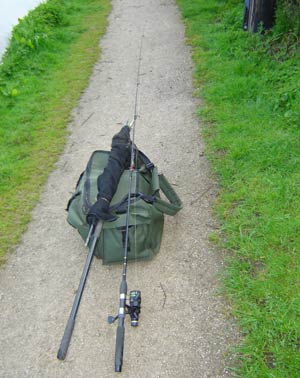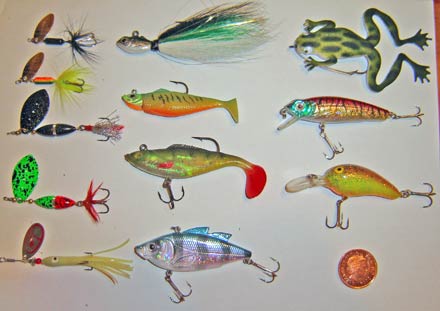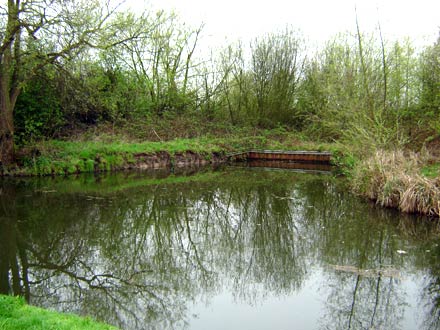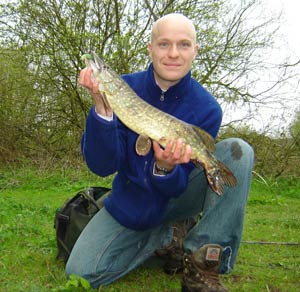| MARK HODSON | |
An angler since he can remember, Mark Hodson almost literally lives, eats and breathes fishing. A match angler in his youth, fishing for the junior Starlets, he turned to the dark side and joined the ‘floppy hat’ brigade in his college years. He worked in the tackle trade for ten years, on a part time or full time basis at Chaplains, one of Birmingham’s busiest tackle shops and managed the specialist department there for two years. He now fishes just for fun, although the ‘floppy specialist hat’ still dominates his angling, his writing concentrates on getting the maximum enjoyment from your angling and trying something different from the norm. |
Towpath Predators Are you struggling to find some truly wild and unpredictable fishing with the rivers off limits until the glorious 16th? Are the commercial venue’s endless supply of stockies not doing it for you, or are you tired of fishing your syndicate or club water for the often-caught known fish that you have seen many times in the papers but has yet to grace your landing net? If so, then I just may have the answer to your problem. Thanks to our Victorian entrepreneurial forefathers our green and pleasant land is crisscrossed with miles of fish-filled canals. There’s not one angler in the country that doesn’t have a canal within half an hours drive of their front door. The great thing about these canals is that for the large part, they are largely unfished, with some stretches receiving no angling pressure at all, especially the ones that require a decent walk to get to. These canals have stocks of fish that are unknown, giving you the chance of some real pioneering exploratory fishing. All these canals have a large population of small fish, such as roach, gudgeon and skimmers, which in turn means there are plenty of predators which capitalise on this food supply. All canals will have pike and perch, some will have the often forgotten predatory chub, and of course there’s the ever increasing spread of the zander throughout the nations canal systems. All my local canals in the West Midlands have zander in them, with at least a couple of venues to my knowledge producing double figure fish over the last two seasons.
The most rewarding and exciting way of catching all these predators is on artificial lures, lure fishing not only gives you the chance of catching them all but also enables you to cover miles of canal in one day, vital on venues where the fish can be very localised. The Gear For all my canal lure fishing I use a one piece 6’6″ Penn Powerstick which is rated for 15lb mainline. It has a fine tip that is ideal for flicking small lures into tight spots which is often what is required to get at the fish. I team this with a small match sized fixed spool reel that has enough winding power and a good enough drag to cope with an angry double figure pike. I have always used Browning and Shimano but the new Okumas have also impressed me without trying them on the bank as yet. Stick to fixed spools on canals as most of the lures you will use will be too small to get the best out of a multiplier and they lack the finesse required for this style of fishing. My mainline is always braid, and is Berkley Whiplash or Fireline; you can’t beat braid for lure fishing, you feel every move and bump of the lure and there’s nothing better for setting those hooks home. To finish off, an 18″nsoft steel trace in 28lb does the trick nicely.
I always carry a landing net for two reasons, firstly a good fish that I wouldn’t want to lift out by hand and lose in the process is always a possibility, and any of the my local cuts could produce a 20lb pike, double figure zander or 4lb perch. Secondly I use it to retain a fish whilst I set up the camera should I want to photograph it. And then I have my carryall in which I have the vital Polaroid sunglasses, flask, forceps, long nosed pliers and wire cutters, lure boxes, camera, spare traces etc. The Lures As you can see from the picture all my favorites lures are small, tiny even compared to the norm. You have to remember that the staple diet of the predators you are trying to catch average under 4oz, your usual canal silver fish a matchman would target. This is what you are replicating unless you fish an imitation frog or a large surface bait for the pike that feed on the smaller rats that swim across the canal. The smallest spinners are Rooster Tails in a 2g size, they flick just nicely across a 12 to 15m wide canal and are unbeatable for perch. The Fox rubber shads are great for all species as is the Mean Big Jig (top centre), and the shallow divers and the imitation frog produce the most amazing takes as pike or chub jump nearly clean out of the water when they hit them. Anything similar to those shown will suffice. Swims Find baitfish or cover that provides an ambush point and you’ll find your predators. My favourite type of swim is one with either moored boats or a reedbed that covers the shelf completely. Both provide ideal cover for predators to strike from as their prey swims along the dropoff, from the near or far side shelf to the centre track.
Overhanging snags are always a good bet, as are the deeper areas around bridges and locks, especially for perch. My favourite type of swim though, are the turning areas created for barges. Predators will heard baitfish into these areas and sit just off them, striking at the fish as they try to exit, or often in warmer weather pike will sit up in these areas where they can lie undisturbed by boat traffic. If you can access them, marinas or pounds are also sure fire winners for the same reasons.
Tactics Whether using surface or sinking lures I always do the same, I cast to my required spot and leave the lure in position for 10-20 seconds before I start retrieving. Often a fish will become alert as soon as the lure hits surface and eye it up immediately. During the wait it recognises it as a potential food source and once you start your retrieve the fish can’t help but strike at it. Often you’ll see a bow wave before the fish hits the lure as it surges out of its cover to attack it. If I catch a perch or zander I’ll stay in the spot for at least 20 minutes as they both hunt in packs and where there’s one there will be more. In fact I’ve been amazed how many zander under a pound I have caught once they are located; I’ve caught up to a dozen from one swim on one occasion at the start of April and they were hitting my lure with a ferocity I’ve normally only experienced with shoals of perch. So if you fancy something different during the close season give the towpath predators a go. You wont break any records, but loads of small pike, perch up to a pound and half, the odd 2lb chub and zander to 4lb have added something a little different to my close season this year. |
















